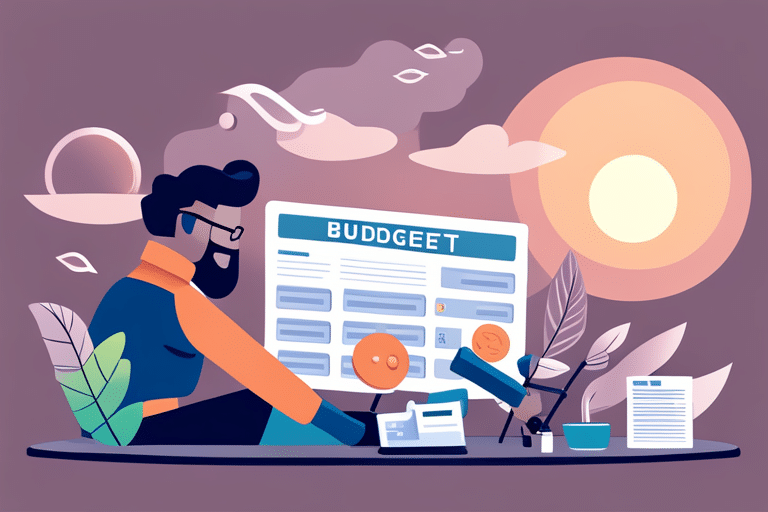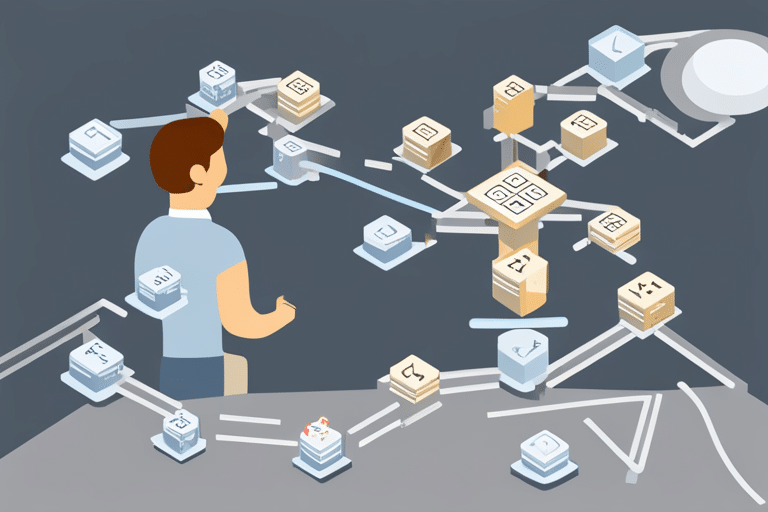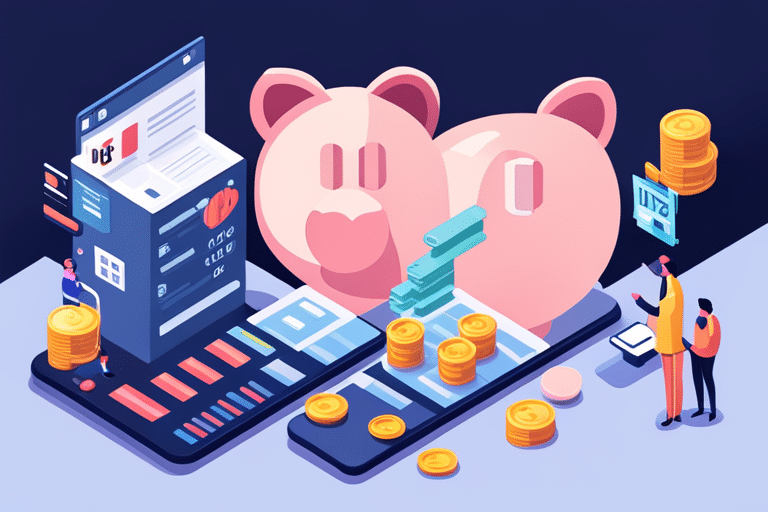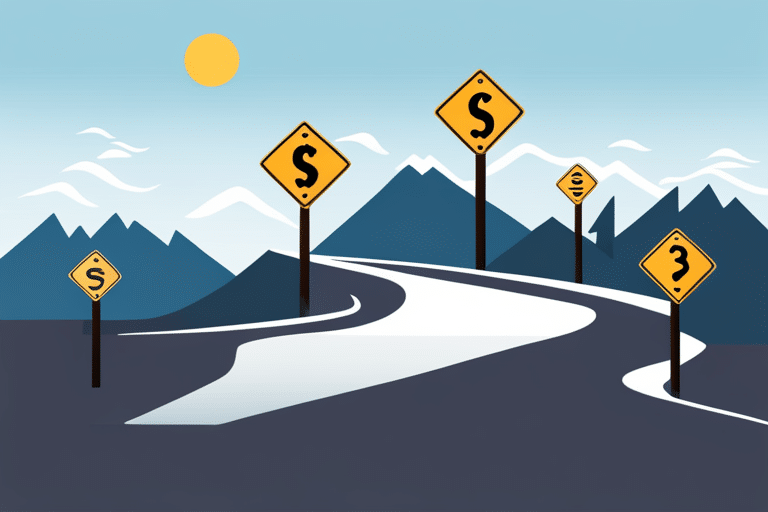Exploring Debt Repayment Strategies{“@context”: “https://schema.org”, “@type”: “NewsArticle”, “headline”: “How to Create a Debt Repayment Plan That Actually Works”, “image”: [“https://moneywisehb.com/wp-content/uploads/2023/08/Create_an_image_show_20230823155922.png”], “datePublished”: “2023-08-23T16:02:52.291601”, “dateModified”: “2023-08-23T16:02:52.291601”, “author”: {“@type”: “Organization”, “name”: “MoneyWiseHB.com”, “url”: “https://moneywisehb.com/about/”}, “about”: {“@type”: “Thing”, “name”: “Debt”}, “mentions”: [{“@type”: “Thing”, “name”: “”Creating an effective debt repayment plan””}, {“@type”: “Thing”, “name”: “”Analyzing income and expenses for debt management””}, {“@type”: “Thing”, “name”: “”Choosing the right debt repayment method””}], “keywords”: “”debt repayment strategies”, “financial planning guide”, “effective budgeting methods””, “educationalUse”: “Teaching effective debt repayment planning.”}
Do you feel like you’re drowning in debt? It’s time to take control and create a debt repayment plan that actually works for you.
In this article, we’ll guide you through the steps to assess your debt situation, set clear financial goals, analyze your income and expenses, and create a realistic budget.
We’ll also show you how to prioritize your debts, stay motivated and focused, make sacrifices and lifestyle changes, build an emergency fund, and celebrate your success along the way.
Get ready to master your finances!
Key Takeaways
- Evaluate income, expenses, and savings to assess the debt situation
- Prioritize and repay debts by considering interest rates and using methods like debt consolidation or the snowball method
- Set specific financial goals and create a savings plan based on current income and expenses
- Seek professional help from financial advisors or counselors if feeling overwhelmed or in need of guidance
Assessing Your Debt Situation

Now that you’ve gathered all your debt information, it’s time to assess your current financial situation. Take a deep breath and get ready to dive into the numbers!
Assessing your debt management is crucial for creating a solid plan. It’s like taking inventory of what you have in order to make better decisions moving forward.
Start by evaluating your financial situation. Take a look at your income, expenses, and savings. How much money do you have coming in each month? What are your essential expenses, such as rent or mortgage payments, utilities, and groceries? And how much are you currently saving?
Next, calculate your total debt. Write down all outstanding balances on loans, credit cards, and any other debts you may have. Don’t forget about those pesky interest rates! This will give you a clear picture of the mountain you’re facing.
Once you have all this information laid out before you, take some time to reflect on it. What patterns or behaviors led to this level of debt? Are there any unnecessary expenses that can be cut back on? Evaluating your financial situation honestly will help guide your next steps towards becoming debt-free.
Setting Clear Financial Goals

Setting clear financial goals is key to successfully managing your debt. It’s like navigating through a maze – without a plan, you’ll just keep going in circles. So, let’s get started on setting those goals and creating a savings plan!
First things first, set your financial objectives. Do you want to pay off all your debt within a certain timeframe? Or maybe you want to save up for that dream vacation? Whatever it may be, write down your objectives and make them specific. The more defined they are, the easier it will be to stay motivated.
Next, let’s create a savings plan. Look at your current income and expenses and figure out how much you can realistically save each month. Maybe you can cut down on unnecessary spending or find ways to increase your income. Once you have an amount in mind, set up automatic transfers from your checking account to a separate savings account so that saving becomes effortless.
Analyzing Your Income and Expenses

Hey there! Now that you’ve set your financial goals, it’s time to dive into analyzing your income and expenses.
In this discussion, we’ll be focusing on two key points: tracking your spending habits and identifying any budget leaks. By keeping a close eye on where your money goes and finding those sneaky areas where you’re overspending, you’ll be able to gain more control over your finances and make the most of every dollar.
Tracking Spending Habits
Tracking your spending habits is essential when creating a debt repayment plan that actually works. It’s like being a detective, searching for clues to solve the mystery of where your money goes each month. By keeping track of every penny you spend, you can start to see patterns and identify areas where you may be overspending.
This knowledge is crucial when it comes to creating a budget that will help you pay off your debts faster. Think of it as building a roadmap to financial freedom. Tracking your spending allows you to make informed decisions about where to cut back and where to allocate more funds towards debt repayment.
Identifying Budget Leaks
To find those sneaky budget leaks, start by reviewing your monthly expenses and pinpointing areas where you may be overspending. It’s time to get serious about cutting back on entertainment and reducing discretionary spending.
Think of it as a treasure hunt, where you’re hunting for those hidden coins that could be better used elsewhere. Take a close look at your Netflix subscription. Do you really need all those streaming services? And what about those impulsive purchases when you’re out with friends? Maybe it’s time to swap pricey dinners for cozy nights in or explore free activities like hiking or board game nights.
Creating a Realistic Budget

Hey there, ready to dive into the world of budgeting?
Well, buckle up because we’re about to tackle two key points: income vs. expenses and setting financial goals.
First off, we’ll break down how much money you’re bringing in versus what’s going out – a crucial step in getting your finances on track.
Then, we’ll discuss the importance of setting realistic financial goals that will help you stay motivated and focused on achieving your dreams.
Income Vs. Expenses
When creating a debt repayment plan that actually works, it’s important to compare your income and expenses. This will help you assess the extent of your debt and determine how much money you can allocate towards paying it off.
To effectively manage your finances, consider implementing these budgeting strategies:
- Track your spending: Keep a record of all your expenses to identify areas where you may be overspending.
- Cut unnecessary costs: Evaluate your expenses and find ways to reduce or eliminate non-essential purchases.
- Increase your income: Look for opportunities to boost your earnings, such as taking on a side gig or asking for a raise.
By assessing your debt and implementing these budgeting strategies, you’ll be better equipped to create a debt repayment plan that aligns with your financial goals.
Now let’s move on to setting those goals and developing an actionable plan.
Setting Financial Goals
Now that you have a clear understanding of your income and expenses, it’s time to delve into the exciting world of setting financial goals. Financial goal setting is an essential step towards achieving your dreams and becoming debt-free. It allows you to have a roadmap for your financial journey and provides motivation along the way.
To help you get started, here’s a handy table to organize your financial goals:
| Short-Term Goals | Long-Term Goals |
|---|---|
| Pay off credit card debt | Save for retirement |
| Build an emergency fund | Buy a house |
| Save for a vacation | Start a business |
Setting both short-term and long-term goals will give you direction and purpose in managing your finances. Remember, achieving goals takes time and effort, but with determination, discipline, and proper planning, you can turn your dreams into reality. So go ahead, set those financial goals and start taking small steps towards achieving them!
Prioritizing Your Debts

To effectively prioritize your debts, start by listing them from highest interest rate to lowest and tackle the ones with the highest rates first. This way, you’ll be able to save more money in the long run.
Here’s a creative and imaginative approach to help you get started:
-
Debt consolidation: Consider consolidating your debts into one loan with a lower interest rate. This can make it easier for you to manage your payments and potentially reduce your overall debt burden.
-
Debt settlement: Explore options for negotiating with your creditors to settle your debts for less than what you owe. This can provide some relief and help you pay off your debts faster.
-
Snowball method: Another strategy is the snowball method, where you focus on paying off the smallest debt first while making minimum payments on others. Once that debt is paid off, you move on to the next smallest one. This method provides a sense of accomplishment and motivation as you see progress being made.
By prioritizing your debts based on their interest rates and exploring options like debt consolidation or settlement, you’ll be taking proactive steps towards becoming debt-free.
Now let’s dive into exploring different debt repayment strategies that can further support your financial goals.
Exploring Debt Repayment Strategies

So, you’re ready to tackle your debt head-on and take control of your financial future? Great!
In this discussion, we’ll explore three key points that will help you on your journey:
- The Snowball Vs Avalanche method
- Creating a budget for success
- When it might be beneficial to seek professional help.
Strap in, because we’re about to dive into some practical strategies that will have you on your way to financial freedom in no time!
Snowball Vs Avalanche
When creating a debt repayment plan that actually works, you should consider whether the snowball method or the avalanche method is more suitable for your situation. Here are some things to think about:
-
Snowball Method: This strategy involves paying off your smallest debts first and then moving on to larger ones. It can provide a sense of accomplishment and motivation as you see debts disappearing one by one.
-
Avalanche Method: With this approach, you focus on paying off debts with the highest interest rates first. This can save you money in the long run by reducing the amount of interest you accumulate.
Both methods have their pros and cons, so it’s important to choose one that aligns with your financial goals and personality. Many people have found success stories using either method, so don’t be afraid to try them out and see which one works best for you.
Budgeting for Success
If you want to achieve financial success, it’s important to budget effectively and make conscious spending choices. One of the first steps towards financial stability is assessing your financial health. Take a moment to evaluate your income, expenses, and debt. This will give you a clear picture of where you stand and help you determine areas where you can cut back or save.
Once you have assessed your financial health, it’s time to create a savings plan. Start by setting specific goals for yourself – whether it’s saving for an emergency fund or a down payment on a house. Next, prioritize your expenses and allocate a certain amount towards savings each month.
To help visualize the impact of effective budgeting and conscious spending choices, take a look at the table below:
| Category | Monthly Budget | Actual Spending |
|---|---|---|
| Groceries | $200 | $150 |
| Entertainment | $100 | $50 |
| Transportation | $150 | $120 |
| Savings | $300 | $350 |
Seeking Professional Help
If you’re feeling overwhelmed with managing your finances, consider seeking professional help from a financial advisor or counselor. They can provide guidance and support to help you tackle your debt and create a realistic repayment plan.
Here are some reasons why professional counseling can be beneficial:
- Expertise: Financial advisors have extensive knowledge and experience in dealing with various financial situations, including debt consolidation.
- Personalized advice: A professional counselor will assess your unique circumstances and tailor their advice to suit your specific needs.
- Emotional support: Dealing with debt can be stressful and emotionally draining. A financial advisor or counselor can offer emotional support throughout the process.
Choosing the Right Debt Repayment Method

To choose the right debt repayment method, you should first evaluate your financial situation and goals. It’s important to understand that different methods work better for different people, depending on their circumstances. Let’s take a look at some popular options:
| Debt Consolidation | Debt Settlement |
|---|---|
| Combine multiple debts into one single loan with a lower interest rate. | Negotiate with creditors to pay a reduced amount to settle the debt. |
| May help simplify your payments and potentially save money on interest. | Can result in paying less than what you owe, but can also have negative impacts on credit score. |
| Requires qualifying for a consolidation loan or program. | Involves negotiating skills and may require assistance from a professional debt settlement company. |
Choosing between debt consolidation and debt settlement depends on factors such as your credit score, income stability, and overall financial health. If you have good credit and are able to qualify for a consolidation loan or program, it might be the best option for you. However, if your financial situation is dire and you’re struggling to make even minimum payments, debt settlement could provide some relief.
Now that we’ve explored these two methods of tackling debt head-on, let’s move on to the next step: negotiating with creditors.
Transitioning into the next section about ‘negotiating with creditors’, it’s important to remember that this step requires effective communication skills and persistence in order to reach an agreement that works in your favor while satisfying your obligations towards repayment
Negotiating With Creditors

When negotiating with creditors, remember to be assertive and persistent in order to reach a mutually beneficial agreement. Here are some negotiation strategies and tips on effective creditor communication:
-
Prepare your case: Before entering into negotiations, gather all the necessary information about your debt, including outstanding balances, interest rates, and any relevant documentation. This will help you present a clear and well-supported argument.
-
Be confident and polite: Approach the negotiation process with confidence, but also remember to be polite and respectful towards the creditor. Being assertive doesn’t mean being aggressive or disrespectful. Maintain a calm demeanor while clearly expressing your needs and limitations.
-
Explore options: During the negotiation process, explore different options that could potentially benefit both parties involved. This could include proposing a reduced payment plan, requesting lower interest rates or fees, or even suggesting a lump-sum settlement if you have the means.
Remember that effective negotiation requires open communication, active listening, and finding common ground. Stay determined in pursuing an agreement that works for both you and your creditor.
Seeking Professional Debt Help

Alright, so you’ve tried negotiating with your creditors but maybe it didn’t go as planned. Don’t worry, there’s still hope! Sometimes seeking professional debt help can be the best option when it comes to creating a debt repayment plan that actually works.
Debt counseling is a great resource to consider. These professionals are trained to provide guidance and support as you navigate your way out of debt. They can help you analyze your financial situation, create a budget, and come up with a personalized plan to tackle your debts.
Another option to explore is debt consolidation. This involves combining all your debts into one single loan or payment plan. It can simplify things by making it easier to manage and potentially lowering interest rates or monthly payments.
To give you an idea of what’s involved in seeking professional debt help, here’s a handy table:
| Debt Counseling | Debt Consolidation |
|---|---|
| Provides guidance and support | Combines multiple debts into one |
| Helps analyze financial situation | Simplifies debt management |
| Creates personalized repayment plan | Potential for lower interest rates or payments |
Implementing a Debt Snowball or Avalanche Method

If you’re looking for a practical approach to paying off your debts, consider implementing a debt snowball or avalanche method. These methods can help you prioritize and tackle your debts in an organized and effective manner.
Here are some key steps to get started:
-
List Your Debts: Begin by making a comprehensive list of all your debts, including credit card balances, student loans, and any other outstanding loans.
-
Choose Your Method: Decide whether you want to follow the debt snowball or avalanche method. The snowball method involves paying off smaller debts first, while the avalanche method focuses on tackling high-interest debts.
-
Create a Repayment Plan: Once you’ve chosen your method, create a repayment plan that works for you. Allocate extra funds towards your targeted debt while making minimum payments on the others.
Debt consolidation and credit counseling can also be helpful resources when implementing these methods. Debt consolidation allows you to combine multiple debts into one manageable payment, simplifying the process. Credit counseling provides expert guidance and advice on managing your finances and developing a successful repayment strategy.
Tracking Your Progress

Congratulations on implementing a debt snowball or avalanche method to tackle your debts! Now that you have a plan in place, it’s important to track your progress and measure your success along the way. This will not only help you stay motivated but also give you a clear picture of how far you’ve come.
To effectively track your progress, consider creating a table like the one below:
| Debt Name | Starting Balance | Current Balance | Progress |
|---|---|---|---|
| Credit Card A | $5,000 | $3,000 | 40% paid off |
| Student Loan B | $15,000 | $10,000 | 33.3% paid off |
| Car Loan C | $20,000 | $17,500 |
Staying Motivated and Focused

Staying motivated and focused on your debt repayment journey can be challenging, but tracking your progress and seeing how far you’ve come can help keep you on track. It’s important to remember that setbacks are normal, but with the right mindset, you can overcome any obstacle that comes your way.
Here are some tips to help you stay motivated and overcome obstacles:
-
Celebrate small wins: Recognize even the smallest achievements along the way. Whether it’s paying off a small credit card balance or sticking to your budget for a week, celebrate these victories. They all contribute to your ultimate goal of becoming debt-free.
-
Find inspiration: Surround yourself with positive influences that inspire and motivate you. Read success stories from people who have conquered their debts or follow personal finance blogs and podcasts that offer practical advice.
-
Visualize your future: Imagine the life you’ll lead once you’re free from debt. Picture yourself stress-free, enjoying financial freedom, and achieving your dreams. This vision will fuel your motivation during tough times.
Making Sacrifices and Lifestyle Changes

So you’ve decided to take control of your finances and start making some positive changes.
Well, the first step in this journey is understanding the importance of budgeting. By creating a budget, you’ll be able to track your income and expenses, giving you a clear picture of where your money is going.
Once you have a budget in place, it’s time to start cutting unnecessary expenses. This might mean saying goodbye to that daily latte or canceling that unused gym membership – every penny counts!
And finally, if you’re looking to speed up your journey towards financial freedom, finding additional sources of income can make all the difference. Whether it’s taking on a side gig or monetizing a hobby, every little bit helps when it comes to reaching your goals.
Importance of Budgeting
Budgeting is crucial when creating a debt repayment plan that actually works. It may seem daunting at first, but the importance of budgeting can’t be overstated. By tracking your expenses, you gain a clear understanding of where your money is going and how it can be better allocated towards paying off your debts.
Here are three benefits of tracking expenses:
-
Awareness: Tracking your expenses allows you to see exactly where your money is being spent. This awareness helps you identify areas where you can cut back and save more towards debt repayment.
-
Accountability: When you track your expenses, you hold yourself accountable for every dollar spent. This mindset shift empowers you to make conscious choices that align with your financial goals.
-
Progress measurement: Regularly reviewing your budget helps you measure progress and stay motivated on your debt repayment journey.
By incorporating these benefits into your budgeting strategy, you set the foundation for success in paying off debts and gaining financial freedom.
Now let’s explore how cutting unnecessary expenses can further accelerate this process.
Cutting Unnecessary Expenses
Now that you understand the importance of budgeting, it’s time to take a closer look at cutting unnecessary expenses. This step is crucial in creating a debt repayment plan that actually works. By identifying and eliminating non-essential expenditures, you can free up more money to put towards paying off your debts.
To help you in this process, let’s use a table to categorize your expenses:
| Expenses | Necessary or Unnecessary |
|---|---|
| Rent | Necessary |
| Utilities | Necessary |
| Eating out | Unnecessary |
| Subscription services | Unnecessary |
By analyzing your spending habits and labeling each expense as necessary or unnecessary, you’ll be able to see where you can make cuts. For example, consider cooking meals at home instead of eating out or canceling unused subscription services. Every dollar saved from cutting unnecessary expenses brings you one step closer to financial freedom.
Additionally, finding additional income sources can greatly accelerate your debt repayment plan. Consider taking on freelance work, starting a side hustle, or selling unwanted items online. This extra income can provide a significant boost when it comes to tackling your debts head-on.
Finding Additional Income
Finding ways to earn extra income can significantly accelerate your progress in paying off debts. While cutting unnecessary expenses is important, it’s equally crucial to find additional sources of income. Here are some creative ideas to help you increase your earnings:
-
Freelancing: Take advantage of your skills and offer freelance services online or locally. Whether it’s writing, graphic design, or tutoring, there’s a demand for various talents.
-
Renting out assets: If you have unused space, consider renting it out on platforms like Airbnb. You could also rent out items such as equipment or even your car when you’re not using it.
-
Part-time jobs: Look for part-time positions that fit into your schedule. From retail to food service, these jobs can provide steady income.
Building an Emergency Fund

Don’t forget to prioritize building an emergency fund when creating a debt repayment plan that actually works. It may seem counterintuitive to save money while you’re trying to pay off debt, but having an emergency fund is crucial for financial stability. Think of it as your safety net, ready to catch you if unexpected expenses arise.
The importance of saving cannot be overstated. Life is full of surprises, and having some money set aside can help you navigate through tough times without falling further into debt. It provides peace of mind knowing that you have a cushion to rely on when things go wrong.
So, how do you build an emergency fund? Start by setting realistic goals. Determine how much you want to save and create a timeline for achieving it. Make saving a habit by automating regular contributions from your paycheck or setting up automatic transfers from your checking account.
Cutting back on unnecessary expenses is another effective strategy. Take a close look at your spending habits and identify areas where you can make sacrifices in order to save more. Cook meals at home instead of eating out, cancel unused subscriptions, and find affordable alternatives for entertainment.
Celebrating Your Success

Remember to take the time to celebrate your success as you reach each milestone in building your emergency fund. Creating an emergency fund is no easy task, and it’s important to acknowledge the progress you’ve made along the way.
So, how can you celebrate these milestones and stay motivated throughout your journey? Here are a few ideas:
-
Treat yourself: After reaching a significant milestone, give yourself a small reward. It could be something simple like buying that book you’ve been eyeing or treating yourself to a nice meal.
-
Share your achievements: Don’t hesitate to share your success with friends and family. They will be proud of what you’ve accomplished and their support can help keep you motivated.
-
Reflect on your progress: Take some time to reflect on how far you’ve come. Look back at where you started and appreciate the steps you have taken towards financial security.
By celebrating these milestones, you’re not only rewarding yourself for your hard work but also reinforcing positive habits. It’s important to stay motivated throughout this process, and celebrating each success will help keep that fire burning.
Frequently Asked Questions
Can I Use a Debt Consolidation Program to Repay My Debts?
You can definitely consider a debt consolidation program as an alternative repayment method for your debts. It’s a way to combine multiple debts into one, making it easier to manage and potentially saving you money in interest payments.
How Can I Negotiate Lower Interest Rates With My Creditors?
To negotiate lower interest rates with your creditors, employ clever negotiating strategies and follow these tips for successful negotiations. Start by discussing how to approach your creditors and demonstrate your commitment to repaying your debts.
Should I Consider Bankruptcy as a Debt Repayment Option?
Consider bankruptcy as a debt repayment option only after exploring alternatives. Bankruptcy has serious consequences and should be a last resort. Look into options like debt consolidation or negotiation to tackle your debts effectively.
Is It Possible to Pay off Debts Without Making Any Lifestyle Changes?
You might hope to pay off debts without changing your lifestyle, but it may not be possible. However, you can explore alternative repayment methods that fit your current situation and goals.
What Are the Potential Consequences of Not Repaying My Debts?
If you don’t repay your debts, it can have serious consequences. Your credit score will take a hit, making it harder to get loans or credit in the future. You may even face legal action. So, it’s important to come up with a debt repayment plan that actually works.
Conclusion
Congratulations! You’ve successfully learned how to create a debt repayment plan that actually works.
By assessing your debt situation, setting clear financial goals, and analyzing your income and expenses, you’ve taken the first steps towards financial freedom.
Through making sacrifices and lifestyle changes, building an emergency fund, and prioritizing your debts, you’ve shown determination and resilience.
Remember to stay motivated and focused on your journey to becoming debt-free. Celebrate each small victory along the way because you’re one step closer to a brighter future!
Keep going; you’ve got this!

